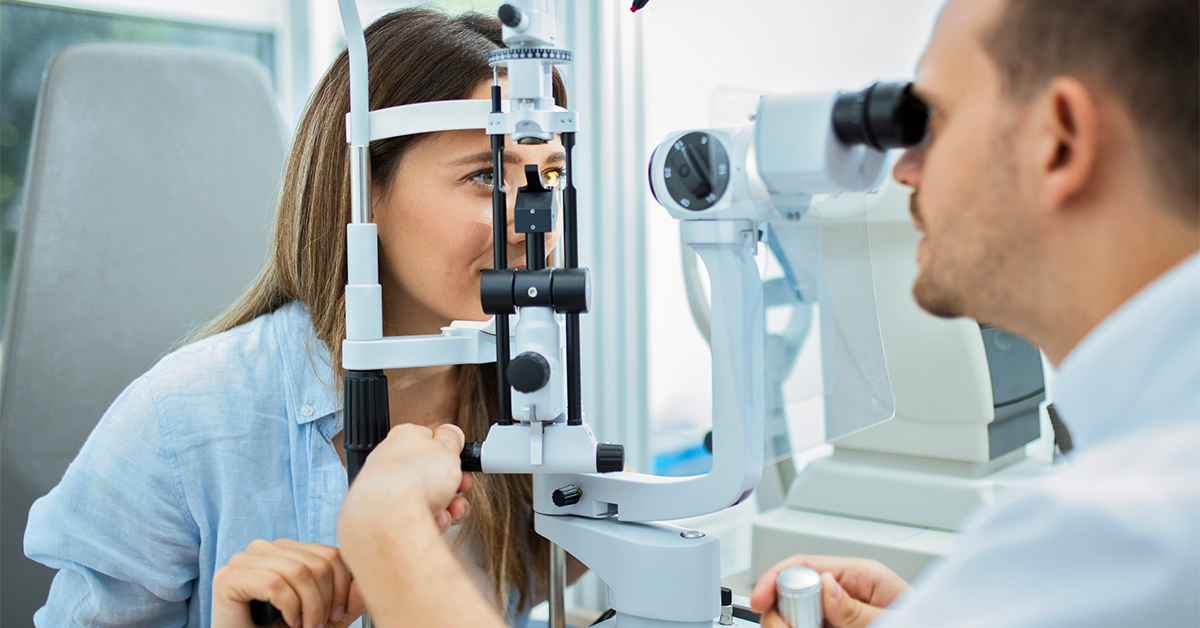Why Selecting an Eye Doctor Optometrist is Necessary for Your Eyes
Why Selecting an Eye Doctor Optometrist is Necessary for Your Eyes
Blog Article
Exploring the most up to date Technical Developments in Optometry and What They Mean for Eye Doctors
From the accuracy of Optical Comprehensibility Tomography to the nuanced insights used by AI-driven analysis devices, these technologies are setting brand-new criteria in individual assessment and therapy. As these developments penetrate the technique, optometrists are faced with the difficulty of welcoming these tools to improve individual end results.
Developments in Diagnostic Tools
Advancing the field of optometry, technologies in diagnostic tools have actually revolutionized the means eye treatment specialists evaluate and identify ocular conditions and visual impairments. The previous years has actually experienced considerable technical developments, enabling even more comprehensive and precise examinations. Optical Comprehensibility Tomography (OCT), for example, offers high-resolution cross-sectional photos of the retina, permitting for the early discovery of conditions such as glaucoma and age-related macular deterioration. This non-invasive imaging strategy has actually ended up being indispensable in modern optometric practice.
Another key technology is the intro of sophisticated corneal topography systems, which map the surface curvature of the cornea with accuracy. These tools are particularly helpful for suitable call lenses and identifying corneal conditions. Digital retinal imaging has actually transformed typical ophthalmoscopy, providing thorough, breathtaking views of the retina that assist in comprehensive visual evaluations.
The development of wavefront aberrometry has likewise been important, enabling the evaluation of refractive errors with unequaled precision (Eye Doctor Optometrist). This innovation assists in customizing restorative lenses and enhancing surgical outcomes for refractive surgical treatments. Collectively, these analysis improvements empower optometrists to provide premium client care, making sure very early treatment and customized treatment techniques, inevitably improving aesthetic health and wellness outcomes
AI in Person Monitoring
Building on the structure of advanced diagnostic tools, the consolidation of artificial intelligence (AI) in individual monitoring stands for a transformative leap for optometry. AI systems are significantly utilized to enhance efficiency, accuracy, and customization in individual care.
Additionally, AI-driven platforms facilitate streamlined person interactions and administrative processes. Automated scheduling, digital examinations, and customized follow-up strategies not just improve patient satisfaction but also optimize time administration for experts. These systems can triage patients based on the seriousness of their problems, making sure that those in crucial demand receive prompt interest.
In addition, AI enhances decision-making by supplying optometrists with evidence-based suggestions and therapy paths. By integrating data from digital health and wellness documents, AI tools provide understandings that inform clinical decisions, reducing the risk of mistakes and enhancing client outcomes. As AI proceeds to evolve, its function in client management will likely increase, improving the landscape of optometric care.
Breakthroughs in Retinal Imaging
In the world of optometry, retinal imaging has experienced remarkable technical innovations that are improving analysis capabilities and individual care. Innovations such as Optical Coherence Tomography (OCT) and fundus digital photography have revolutionized just how optometrists imagine and evaluate the retina.
Boosted imaging techniques like OCT angiography are further refining diagnostic precision. This non-invasive method maps blood flow in the retina, offering vital understandings right into vascular wellness without the requirement for color injections. In addition, adaptive optics innovation is being incorporated into retinal imaging systems to fix eye aberrations, delivering unmatched image clearness. Such improvements assist in the identification of minute retinal changes that can signify illness progression.
Moreover, innovations in expert system are augmenting retinal imaging by making it possible for computerized evaluation of large datasets. These systems assist eye doctors in recognizing patterns indicative of pathology, thereby improving analysis precision and efficiency. Collectively, these technologies are transforming retinal imaging into a foundation my site of contemporary eye treatment, boosting outcomes and increasing therapeutic possibilities.
Teleoptometry's Growing Function
Teleoptometry is increasingly ending up being an important part of eye treatment, driven by innovations in data and analysis devices. As optometry welcomes digital makeover, teleoptometry helps with remote examinations, permitting optometrists to expand their solutions beyond traditional borders. This is particularly advantageous in rural and underserved areas where accessibility to specialized eye care is typically restricted. By leveraging high-resolution video conferencing and advanced retinal imaging, eye doctors can carry out comprehensive eye examinations from afar, guaranteeing prompt diagnosis and treatment.
The integration of synthetic knowledge (AI) further enhances teleoptometry, allowing the analysis of visual data and helping in the detection of eye conditions such as glaucoma and diabetic retinopathy. AI-powered algorithms can swiftly interpret intricate imaging information, providing optometrists with beneficial understandings that reinforce medical decision-making.
In addition, teleoptometry sustains connection of care through seamless combination with electronic health documents (EHRs), allowing eye doctors to preserve detailed client backgrounds. When seeking advice from with various specialists., this guarantees that people receive individualized and consistent care even.
In spite of these advantages, difficulties stay, including guaranteeing data protection and taking care of patient expectations. Teleoptometry stands for a substantial stride in the direction of more accessible, effective, and patient-centered eye care. As innovation develops, its duty is poised to expand additionally.

Future Trends in Eye Treatment
A myriad of ingenious patterns is set to reshape the future of eye treatment, driven by technical improvements and the evolving requirements of clients. One significant pattern is the assimilation of expert system (AI) in diagnostics, which promises to boost the precision and effectiveness of eye evaluations. AI algorithms can analyze substantial quantities of information from retinal photos, potentially discovering conditions like diabetic retinopathy and glaucoma earlier than traditional methods.
Moreover, tailored medication is acquiring traction in optometry, with genetic screening notifying customized therapy strategies. This approach intends to optimize client end results by tailoring interventions to individual genetic profiles. Wearable technology, such as clever contact lenses, is likewise coming up, supplying real-time monitoring of intraocular stress or glucose levels, hence offering continuous understandings right into eye and systemic health.
The fostering of augmented reality (AR) and digital reality (VR) in training and other individual education and learning is an additional arising pattern. These technologies offer immersive experiences that can improve understanding and abilities both for eye doctors and individuals. As these fads evolve, optometrists should remain abreast of technical developments to provide sophisticated treatment, making certain enhanced patient end results and contentment in the dynamic landscape of eye treatment.
Conclusion

Jointly, these diagnostic improvements encourage optometrists to deliver remarkable patient care, ensuring early intervention and customized therapy approaches, eventually boosting visual health and wellness results.

As these innovations proceed to develop, optometrists need to adapt and incorporate them into practice, eventually optimizing process effectiveness and elevating the standard of eye care provided to individuals.
Report this page